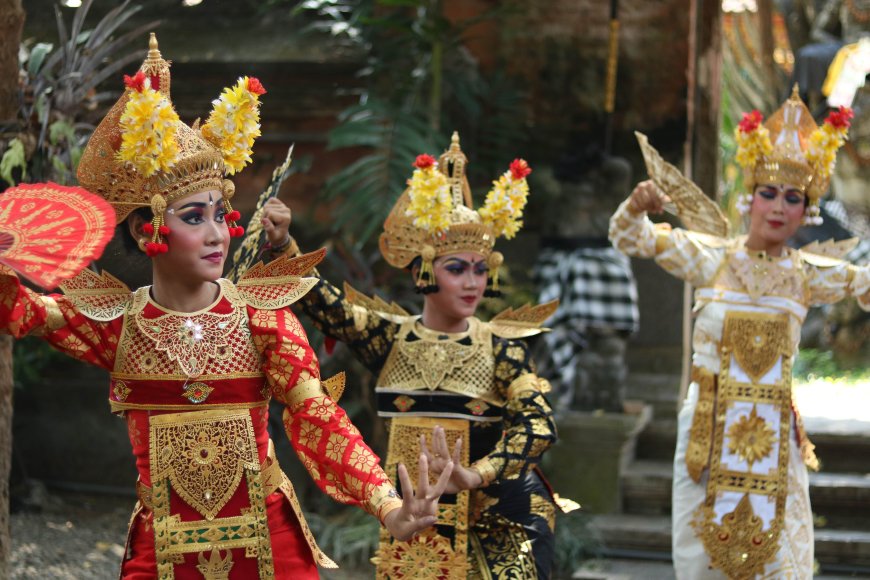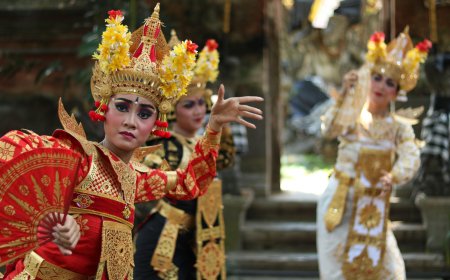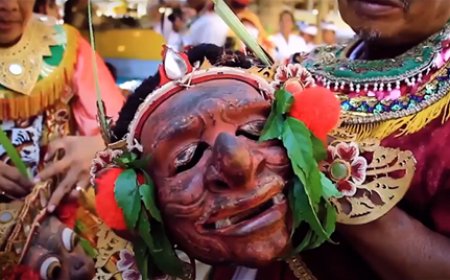Legong Tri Sakti Dance, Rich in Meaning and Culture
Who isn't familiar with Bali? The beautiful island brimming with cultural diversity. Bali is not only renowned for its lush landscapes but also for its rich culture. One of the intangible cultural treasures of the island known as the "Island of the Gods" is the Legong Tri Sakti Dance. Legong Tri Sakti Dance, as one of the gems of traditional performing arts in Bali, embodies the profound and captivating cultural richness of Indonesia. With a long history and deep meaning, this dance has evolved into a significant symbol in the lives of the Balinese people.

The Legong Tri Sakti Dance is one of the renowned traditional dances of Bali, known for its profound meaning. Typically performed by three female dancers adorned in beautiful and elegant traditional Balinese costumes, the Legong Tri Sakti Dance carries numerous meanings and symbolisms deeply rooted in Balinese culture.
The Legong Tri Sakti Dance has a long and rich history. According to legend, this dance was first performed by a Balinese king in the 18th century as entertainment for special guests. Since then, it has gained increasing popularity. Some theories suggest that this dance may have been inspired by older dances like the Legong Keraton and Legong Jobog. Over time, the Legong Tri Sakti Dance evolved into a more complex performance, characterized by delicate movements and deeper storytelling.
This dance has a strong connection with the royal palaces in Bali. In the past, it was often performed within the palace walls and played a significant role in religious ceremonies. As a mark of respect for tradition and culture, the Legong Tri Sakti Dance enriched important moments in royal life, bringing joy and entertainment to the members of the royal family.
The Legong Tri Sakti Dance features numerous intricate movements that demand precise coordination among the dancers. These movements mirror the grace and finesse of Balinese women while also symbolizing the spiritual strength and deep reverence of the Balinese people for their deities.
In addition to its beautiful movements, the Legong Tri Sakti Dance also boasts exquisite and elegant costumes. These costumes are made of traditional Balinese fabrics adorned with various motifs and vibrant colors. The dancers also wear fresh flower crowns on their heads, adding to the beauty and grace of the dance. Every element of their attire and costumes is meticulously designed to reflect the beauty and traditional elements of Balinese culture. The dancers of the Legong Tri Sakti Dance perform in three main roles, each representing different characters within the dance's story.

Details of the Dancer's Makeup and Crown Decoration (Photo Source: Editorial Collection)
Apart from costumes, make-up is also an important part of the appearance in the Tri Sakti Legong Dance. These dancers wear traditional Balinese makeup which includes subtle facial makeup in bright colors, especially red and yellow. This make-up provides a dramatic and captivating appearance, emphasizing the dancer's facial expressions as they execute complex dance moves. The combination of beautiful costumes and dramatic makeup creates a very stunning appearance in Tri Sakti Legong Dance. Every element of this performance is a reflection of the rich and profound beauty of Balinese culture. This also illustrates how serious efforts are made to maintain and care for this tradition so that it survives and develops in the modern era. The appearance and costumes in the Legong Tri Sakti Dance are one of the aspects that make this performing art an invaluable cultural treasure for Bali.
The Legong Tri Sakti dance depicts three Hindu Gods, namely God Brahma, God Vishnu, and God Shiva, which in Hinduism is called Dewa Tri Murti. The clothing attributes of each dancer have a different color, red symbolizes Lord Brahma, black symbolizes Lord Vishnu, and white symbolizes Lord Shiva. Legong Tri Sakti dance also has important moral values for Balinese people. This dance teaches the importance of cooperation and harmony in life. The third dancer must work well together to create beautiful and harmonious movements. Apart from that, this dance also teaches about the importance of maintaining personal purity and cleanliness, as well as maintaining good relations with others.

Dancer's Facial Expression (Photo Source: Editorial Collection)
The Legong Tri Sakti dance, as part of Indonesia's rich culture, offers many interesting variations that reflect cultural diversity throughout the country. One of the most famous variations is the Legong Keraton Dance. This dance is characterized by the appearance of two female dancers who amaze the audience with complex movements. The costumes used in the Legong Keraton Dance are also works of art in their own right, with exquisite detailing.
On the other hand, the Legong Lasem Dance is an intriguing variation originating from the Gianyar region. This dance showcases more dynamic movements compared to the Legong Tri Sakti, radiating an astonishing energy. Despite the increased dynamism in its movements, the costumes worn by the dancers tend to be simpler, imparting a unique touch of simplicity to their appearance.
Not only in Indonesia but also worldwide, the Legong Tri Sakti Dance has gained increasing recognition as a valuable cultural heritage of Bali. More and more foreigners are drawn to learn and appreciate the beauty of this dance. They come to Bali not only to explore the beauty of the island itself but also to experience the depth of its cultural artistry, with the Legong Tri Sakti Dance being one of the main attractions. Thus, this dance serves as a cultural window to the outside world, contributing to the preservation and promotion of Indonesia's cultural richness.






























































